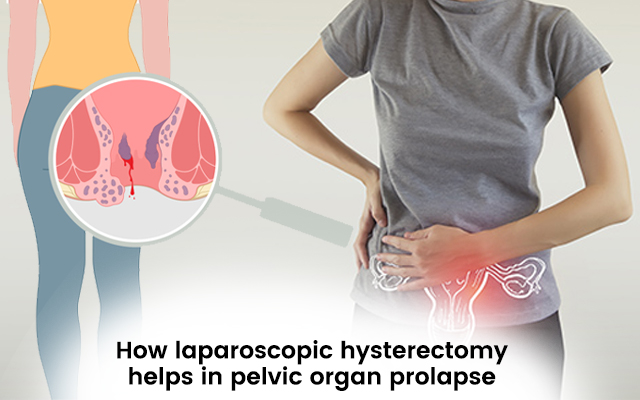Pelvic organ prolapse (POP) is a common condition among women, characterized by the descent of pelvic organs, such as the uterus, bladder, or rectum, due to weakened pelvic floor muscles. While there are various treatment options available, laparoscopic colposuspension accompanied by a hysterectomy has emerged as a revolutionary technique in managing POP.
In this article, the leading laparoscopic hysterectomy surgeon in Kolkata explores how this cutting-edge procedure aids in the treatment of pelvic organ prolapse, offering patients a minimally invasive solution with remarkable benefits.
The role of laparoscopic hysterectomy in treating pelvic organ prolapse
In pelvic organ prolapse, due to the laxity of the vaginal support, the pelvic organs bulge and protrude. Laparoscopic colposuspension is utilized to re-suspend the vagina and other pelvic organs through key-hole incisions.
In quite a lot of cases, a simultaneous hysterectomy is required to supplement the colposuspension. Below, as the best gynecologist in Kolkata, we have highlighted the benefits of the procedure in treating pelvic prolapse.
Precise Evaluation and Diagnosis
Laparoscopic hysterectomy allows for a comprehensive evaluation of the pelvic region, enabling the laparoscopic hysterectomy surgeon to accurately diagnose and assess the severity of pelvic organ prolapse. With the aid of high-definition imaging and specialized instruments, surgeons can visualize the pelvic organs and identify the specific areas of weakness, tailoring the treatment plan to each patient’s unique condition.
Minimally Invasive Approach
Traditionally, open abdominal surgeries were the standard approach for treating pelvic organ prolapse. However, laparoscopic hysterectomy has revolutionized the field by offering a minimally invasive alternative.
This technique involves making several small incisions through which a laparoscope and surgical instruments are inserted, allowing surgeons to perform the procedure with precision while minimizing trauma to surrounding tissues.
Moreover, it is considered the most effective treatment for uterine prolapse. When the uterus drops into the vagina and resists all the other treatments by medications, laparoscopic hysterectomy is the bulls-eye treatment for uterine or, for that matter, pelvic organ prolapse.
Reduced Risk of Complications
Laparoscopic hysterectomy boasts a lower risk of complications compared to traditional open surgeries. The smaller incisions result in less blood loss, reduced postoperative pain, and a decreased likelihood of infection.
Additionally, the shorter hospital stay and faster recovery time associated with this procedure contribute to an overall lower risk profile, enhancing patient comfort and satisfaction.
Preservation of Sexual Function
One of the significant advantages of laparoscopic hysterectomy in the treatment of pelvic organ prolapse is its potential to preserve sexual function.
By maintaining the integrity of surrounding pelvic structures, such as the nerves and blood vessels, this technique minimizes the risk of damage and postoperative sexual dysfunction. This aspect of the procedure is crucial for women seeking relief from POP while preserving their overall quality of life.
Long-Term Success
Studies have shown that laparoscopic hysterectomy yields excellent long-term success rates in treating pelvic organ prolapse. The procedure effectively addresses the underlying causes of POP, providing durable support to the pelvic organs and reducing the risk of recurrent prolapse. This long-term success translates into improved quality of life, increased comfort, and enhanced overall well-being for patients. Because of its precision, efficacy, and success rate, this technique is considered by laparoscopic hysterectomy doctors to be the gold standard in addressing pelvic organ prolapses.

